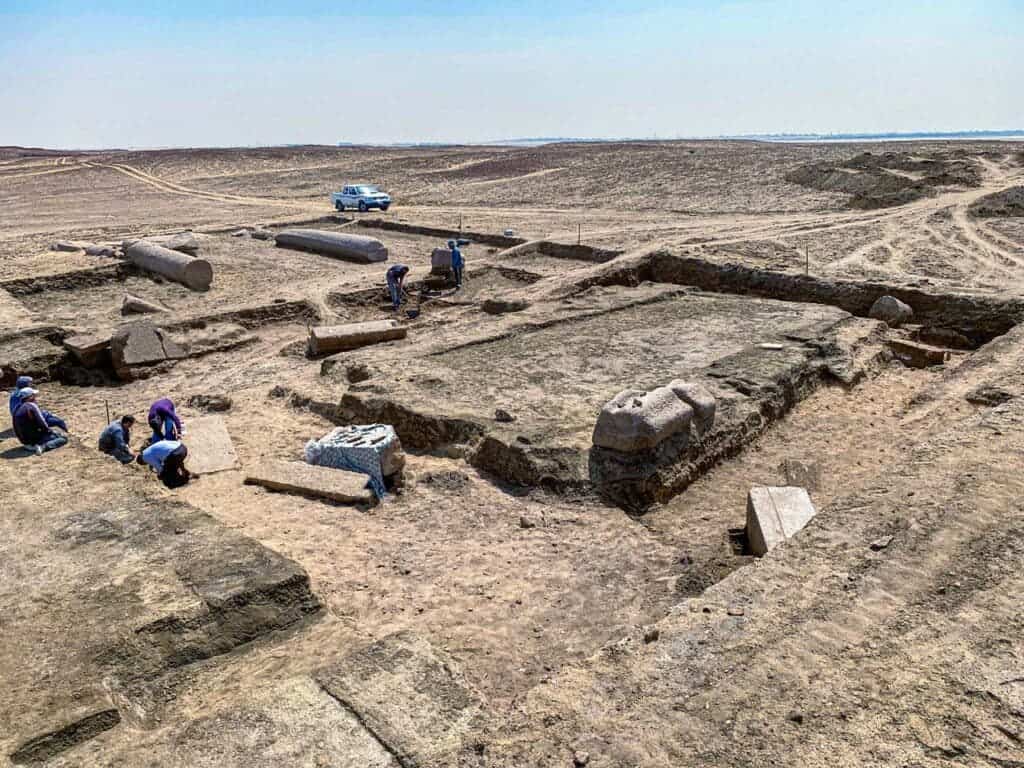Zeus — the ancient Greek god of thunder and sky, was once worshipped by millions of people in ancient Greece. Even the ancient Olympic games that started in 776 BC and led to the birth of the modern Olympics used to be held in the honor of Zeus. Zeus is an integral part of Greek mythology and archaeologists often come across various ancient sites in Greece related to Zeus. However, a recent archaeological finding in Egypt suggests that the followers of Zeus existed well beyond the borders of ancient Greece as well.

A team of Egyptian archaeologists under the Egyptian Ministry of Tourism and Antiquities has discovered the ruins of an ancient Zeus temple in Tell el-Farma (previously called Pelusium), an excavation site located in Egypt’s Sinai peninsula region. Interestingly, the ruins include pillars with inscriptions that mention that the temple was once restituted by the Roman emperor Hadrian. Historical records suggest that Hadrian was a great admirer of Greek culture and during his reign, he wished to revive Athens’ lost glory.
During their excavations, the researchers also came across archeological remains of early Islamic and Christian societies, suggesting a melting pot of culture and religion.
How do the temple ruins connect mythology to archaeology?
Archaeologists suggest that the temple was built to honor Zeus Kasios, a greek God that resulted from the merger of Zeus and Mount Kasios, which lies close to what is now the Turkey-Syria border. According to Greek mythology, after the gods defeated the Titans, the goddess of Earth Gaea merged with an underworld creature Tartarus and gave rise to a monster named Typhon to rule the universe.
An intense battle took place between Zeus and Typhon at Mount Kasios (also called Casion or Casius) which is currently located in Damascus city of Syria. It is believed that the mountain assisted Zeus during his fight with the monster, and even today it is considered a sacred landmark by followers of Greek culture and some other cults. Interestingly, the mountain also witnesses numerous thunderstorms (one of the powers of Zeus) throughout the year.
According to Egyptologist Dr. Mostafa Waziri, who also happens to be the Secretary-General of Antiquities at the Egyptian Ministry of Tourism and Antiquities, during the recent excavation, archaeologists found pieces of large granite pillars. Waziri claimed that the pillars were made of pink granite and were originally about two meters in height. These pillars are also believed to have served as supporting structures to the temple’s entry gate.

Moreover, he confirmed that the archaeologists also unearthed numerous granite blocks which probably would have been used in the construction of a staircase that led the visitors to the temple.
This isn’t the first excavation of the Zeus Kasios temple. In the early 1900s, French archaeologist Jean Clédat came to Egypt in search of a historically important Christian structure. During his exploration, he didn’t excavate the Tell el-Farma site but found inscriptions and carvings that mentioned the presence of the Zeus Kasios temple.
Secrets the ruins of the Zeus temple hold within
The remains of the pillars and the pink granite stones can reveal important information about the architecture of the temple. The ruins might also provide the archaeologists with useful information about the influence of ancient Greek culture in Egypt and highlight the efforts of Roman emperor Hadrian for renovating the temple. Moreover, these archaeological findings are likely to attract more tourists to Egypt which is the primary goal of the Ministry of Tourism and Antiquities.
Director of Sinai archaeological site, Hisham Hussein said that at present, his team of researchers is studying the unearthed granite pillars and blocks. Soon they will also perform a photogrammetry survey of the remains, which will create a digital model of the structure, so that they have more information about the temple’s architectural design.



